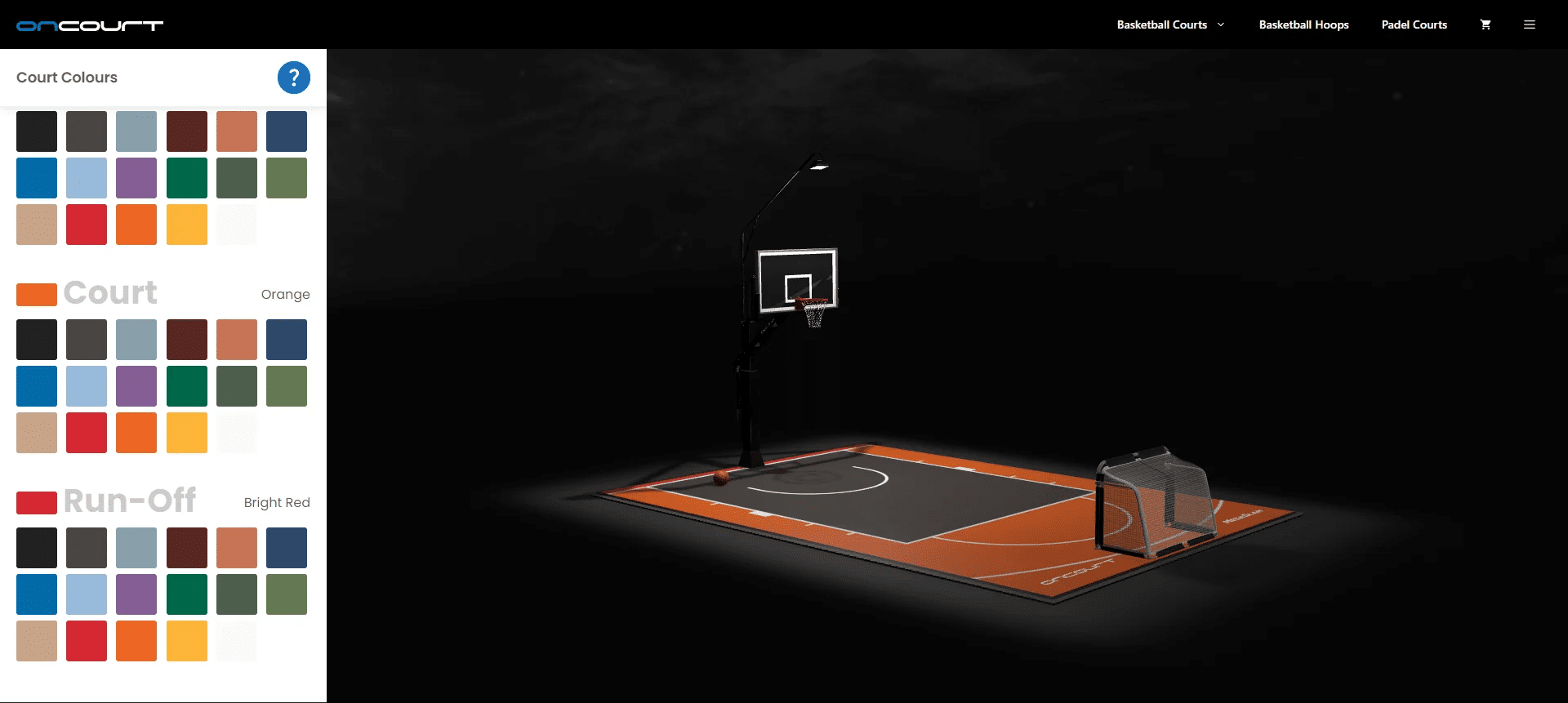3D Walkthrough for Real Estate Developers and Agents


Some incredible innovations, like virtual tours in your presentations and designs, are changing the real estate industry as we know it. So if you work in interior design, architecture, or real estate sales, pay attention! These changes are bound to ripple and affect how properties are designed and sold.
A 3D virtual tour offers a full 360 view of any building, house, or space — and you don’t even have to leave your seat! If you’re unfamiliar with this fantastic technology or are hesitant about trying it, let us explain why it has become such an essential tool in every real estate agent’s and architect’s arsenal.
What is a 3D walkthrough?
With a 3D virtual tour, you can view the inside of a property before purchasing it and get an idea of how to change it up. This technology is rendered by digital artists and gives potential buyers a complete virtual tour of any real estate architecture. With this type of innovation in play, the future looks promising for continued changes and progress within the field.
Being able to see a place without being there in person has made selling and renovating much more efficient. Virtual tours have many applications, and real estate is one of them. This technology streamlines the process by avoiding open houses, which can be inconvenient and characterized by large crowds. You’re now only a click away from offering virtual tours of your future home instead!
3D virtual tour animation services can be used for more than just looking at buying real estate. For example, if you want to redesign or renovate your home, a virtual house virtual tour will let you do so using hyper-realistic changes that look like they’re happening in real time! You can include everything from rugs and windows to accessories and see how they would look in the designated space.
Specialized virtual tour software captures your home or any other real estate in virtual tours. Cameras are placed inside each room, scanning the space and notifying the user once complete. Artists can also plan and create a virtual tour of your home by animating it.
What are the benefits of a 3D walkthrough?
If you want to amaze your clients and generate more sales, stop using traditional sketches and join the modern world by incorporating virtual tour animations into your displays. This technology provides multiple advantages that will change your real estate business. Take a look.
Better than 2D
Even though 2D plans are still used in real estate marketing to some extent, virtual tours have become the new norm. In the past, properties and homes were mainly showcased using 2D plans. However, it’s no secret that these mockups can be somewhat confusing and difficult to grasp, especially for lay people who aren’t familiar with this field.
Virtual tours are foolproof. A significant advantage of virtual tour
technology is that anyone can understand it. The visuals are so clear, detailed, and easy to follow that even someone with no prior real estate experience will be able to grasp the concept quickly. In addition, with 2D models, there is no possibility of corrections like with 3D models.
Better visual presentations
Virtual tours are guaranteed to impress your clients. With stunning aerial views of the space in three dimensions and the ability to add or remove elements on the fly, you’re sure to leave them astonished. You can also hand your clientele a copy of the design or send them a link to where they will have access at any time. Talk about convenience! That is an experience that will not only result in more sales but foster trust between you and your customers.
Cost effective
A 3D virtual tour has plenty of advantages, with one being cost-effectiveness. Plus, it can help you save money in more ways than one. To start, it completely removes the need for creating sketches, mockups, and paper models, saving you time and hassle. You can show off your idea with a 3D virtual virtual tour presentation on your tablet or computer without fuss!
Three-dimensional virtual tour services aren’t just cost-effective during the pre-construction phase, but also save you money by reducing the chance of human error. With virtual tours, you can identify and fix issues before construction begins instead of being forced to pay for post-construction repairs, saving a lot of money in the long term.
Flexible options
With 3D virtual tour interior design technology, you can create endless possibilities for your customers. Real estate is a business that’s based on visual appeal, so using this technology will help you increase sales and attract more customers than ever before. It allows you to take your customers on a journey and helps them envision their future lives in a new home. Not only can you use it to increase website traffic, but you can also use it to market office space and other types of properties.
Realistic digital technology transports your customers inside a property, so they can explore every nook, cranny and unique feature. Pools, spas, playgrounds, and cinemas are all details you can emphasize to create an engaging virtual tour of a neighborhood or surrounding spaces. With this tech, customers understand what they’re investing in and see the area’s potential before making any final decisions.
Simplified design process
3D house interior virtual tours are great for anyone, since they don’t require any previous experience or technical knowledge. However, if you’ve ever tried to collaborate with a client, especially at the beginning of a project, you know how difficult it can be to stay on the same page.
With this technology, both clients and designers can have a clear picture of the project before starting to work on it. Then, they can pitch different ideas, add elements, and make changes without worrying about actually implementing them in real life.
In addition, because this technology produces designs in such precise detail, you’ll be able to zero in on and expand different spaces to show off certain elements that might go unnoticed with other more traditional methods. If there’s something your client isn’t keen on, you can change it within 24 hours without any additional trouble.
Quick alterations
Making changes on the fly is one of the many advantages that 3D modeling provides construction developers. For example, customers often have a change of heart or specific requests concerning what they want in their building. By being able to edit and show these updated plans almost instantaneously, you can increase your chances of getting approval for moving forward with construction.
Time saving
Many real estate developers today enlist experts’ help for 3D animation virtual tour services because it can save them time. They use three-dimensional animation technologies to detect flaws in construction planning. Even if the building process has already started, making changes would take time and money. Therefore, experts utilize the best virtual tour software for 3D modeling to find errors in construction so that everyone benefits from it.
How to create a 3D walkthrough brief
A comprehensive and detailed brief is imperative, especially if you want to capture your client’s attention from the start. Here’s how to nail your brief and score more clients than ever:
- Include extensive details about your project, such as goals, target locations, and any requirements or notes. That will be helpful later when you’re trying to create a virtual tour visualization of the project.
- To communicate the main idea and concept better, add references and find inspiration from other sources. These can include a site plan, floor plan, architectural sketches, 3D renders, texture examples, and anything else that inspired the project’s concept.
- Outline what is to be included in the virtual tour: this can encompass camera waypoints, relevant objects/people, frame transitions, and other notable details.
- When choosing your environmental elements, consider the light sources, weather conditions, and time of day.
- Set your post-production preferences: decide if you want to include background noise, music, subtitles, voiceovers, and logos. Select your desired resolution: HD, Full HD, or UHD 4K.
How to create a 3D real estate walkthrough
While different design companies employ various techniques and processes to create virtual tours, the overall concept is more or less similar. Below, we’ll explain some basics on how to create 3D real estate virtual tours and briefs. These are the four most important steps:
- Waypoints are clickable elements that, once clicked, take you to the next step in your virtual tour. They help keep customers on track by allowing them to start at one location and move through the process step by step.
- Utilize the Camera Settings menu to adjust the focal length and frame rate. That will guarantee that your footage is high-definition, realistic, and realistically captures your surroundings.
- It helps to take notice of any vertical movements, especially for properties with high ceilings. Decide on a height that will restrict the vertical movement function. It doesn’t have to be all the way, but it should still be able to move around enough to get an in-depth feel for the place.
If you integrate the design into your company website, clients can browse designs and properties online at their convenience without needing to waste time or energy.
Uses of a 3D walkthrough
- Leveraging technology: When you present the property to potential customers, include its unique selling points (USPs). You can use three-dimensional virtual tours to create lighting and other realistic effects that will make a lasting impression on viewers and increase your chances of making a sale.
- Better comprehension of plans: Floor plans become much easier to understand when three-dimensional virtual tours are set up for potential customers. If you want your clients to see what the proposed structure will look like, reach out to companies that provide this type of service. A significant benefit of using 3D technology is that it gives viewers a realistic idea of how the final product will appear, strengthening overall understanding.
- Competitive edge: You can get a competitive advantage over others in your industry when you use this technology. The real estate industry is only getting more competitive, so you must find ways to stay ahead of your peers. When you present the proposed plans to your clients in a better way, they will be able to see why you’re the best choice.
- Enhancing sales prospects: By utilizing 3D virtual tour floor plans, real estate developers can provide potential buyers with a more comprehensive understanding of their proposed structures. This includes interior designs and amenities, making the presentation more collaborative and engaging. As a result, sales generally increase as buyers have no trouble envisioning themselves in these properties. Utilizing this strategy also gives developers an edge over competitors who haven’t integrated such technology into their business model.
This technology should be integrated into construction projects, as it will increase sales and give developers peace of mind that all resources are being used efficiently. In addition, 3D virtual tour technologies can be applied to residential and commercial projects, streamlining the effectiveness of the planning stage and execution process.
The reason technologies are used so extensively by architects, engineers, and developers today is to make the best use of resources for real estate companies. Real estate is a fast-paced industry that requires continuously evolving technology skill sets and integrative thinking from practitioners to stay ahead of the competition. By using virtual tours during online promotions, you can attract more prospects than ever before!
The bottom line
Virtual tours are an excellent way for potential buyers to view a property online without having to be there in person. Using the right equipment and virtual tour software, you can make a virtual tour that is fun and engaging, which will help increase interest in your real estate listings and help them sell faster.
we reply in 1 day











